In the shadowy realms between dusk and dawn, a family of birds conducts its mysterious affairs largely unseen by human eyes. Nightjars, with their cryptic plumage and nocturnal habits, represent some of the most elusive avian species on our planet. These enchanting birds have evolved remarkable adaptations that allow them to thrive in the darkness, hunting insects with silent precision and nesting directly on the ground despite numerous predators. Their secretive nature has made them the subject of folklore across cultures and challenging subjects for ornithologists to study. This exploration of nightjars reveals their hidden world—from their specialized hunting techniques to their unusual breeding behaviors—offering a glimpse into lives that unfold primarily when most of us are asleep.
Masters of Camouflage: The Nightjar’s Invisible Presence
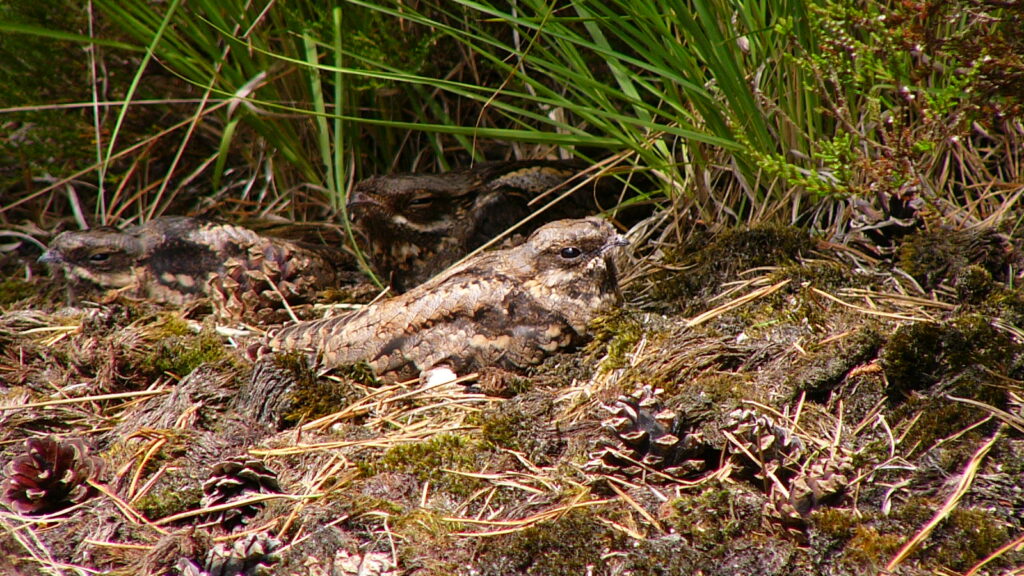
Nightjars possess some of the most effective camouflage in the avian world, with plumage patterns that perfectly mimic tree bark, fallen leaves, and forest floor detritus. This remarkable cryptic coloration—typically consisting of mottled browns, grays, and blacks—renders them virtually invisible when resting during daylight hours. The birds enhance their camouflage by adopting a distinctive posture, perching lengthwise along branches rather than across them as most birds do, eliminating their silhouette against the sky. When threatened, nightjars will freeze completely still, closing their eyes to narrow slits, relying entirely on their camouflage rather than flight as a first defense. Even dedicated birdwatchers often walk within feet of resting nightjars without detecting them, making a sighting of these birds in their natural daylight roosting position a rare and treasured experience.
Evolutionary Adaptations for Night Hunting
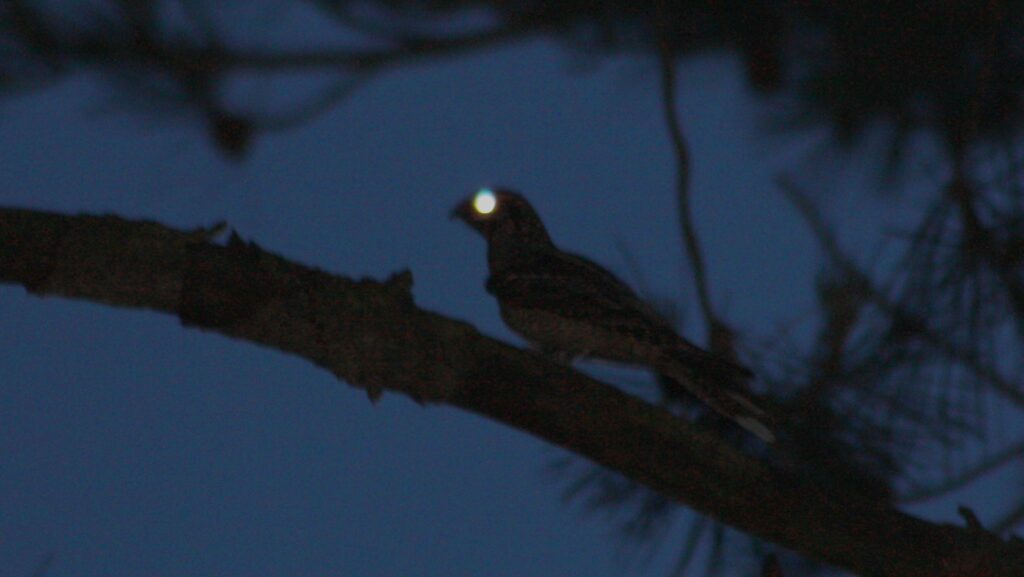
Nightjars have evolved remarkable adaptations specifically for hunting in low-light conditions that few other birds possess. Their enormous eyes contain a high concentration of rod cells—light-sensitive photoreceptors that enhance night vision—allowing them to detect the slightest movements in near-darkness. Perhaps their most distinctive feature is their bizarrely wide mouth, which can open to an astonishing gape that extends well beyond the edges of their tiny beak, creating an effective aerial net for catching flying insects. Many species feature specialized bristles around their mouths that may help funnel insects into their gape or possibly provide tactile information during flight. Their wings have evolved for silent, moth-like flight, with soft-edged feathers that eliminate the swooshing sound typical of other birds, allowing them to approach prey undetected and avoid becoming prey themselves in the darkness.
The Diverse Nightjar Family Around the World
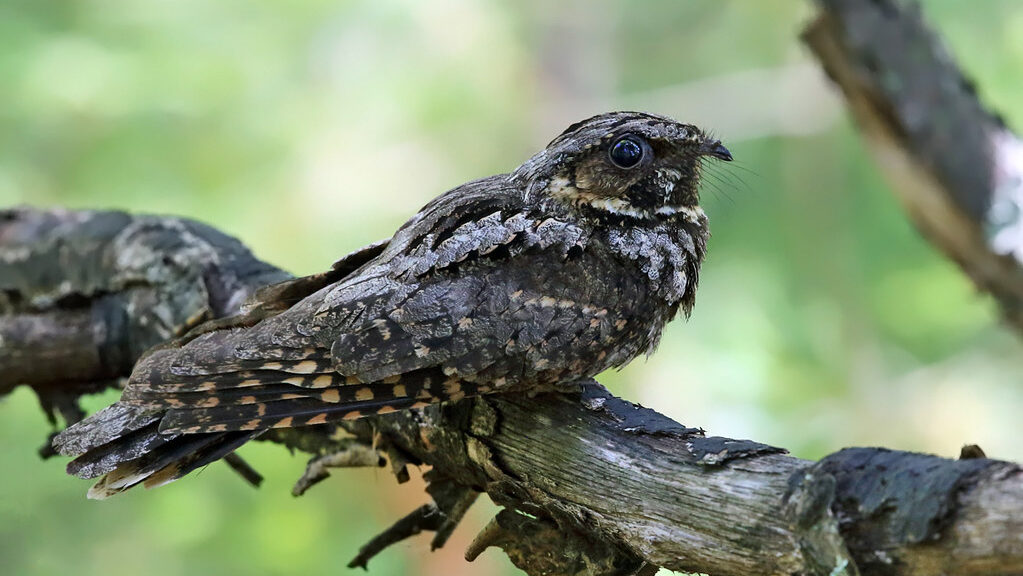
The nightjar family (Caprimulgidae) includes approximately 100 species distributed across every continent except Antarctica, demonstrating the success of their specialized nocturnal lifestyle. Notable members include the Common Nighthawk of North America, the European Nightjar, the Whip-poor-will known for its distinctive calling, and the Australian Spotted Nightjar adapted to arid environments. Each species has adapted to specific local environments while maintaining the family’s characteristic nocturnal hunting style and cryptic appearance. In tropical regions, the diversity of nightjars increases dramatically, with species specializing in different habitats from dense rainforests to open savannas. The family also includes the fascinating frogmouths of Asia and Australia and the potoos of Central and South America, which take camouflage to even more extreme levels by resembling broken branches when perched.
Unconventional Nesting Behaviors

Unlike most birds, nightjars forego nest-building entirely, instead laying their eggs directly on the ground with minimal or no preparation of the site. This seemingly risky strategy works because of their exceptional camouflage—both the adults and their eggs feature cryptic coloration that blends perfectly with forest floors, desert sands, or rocky outcrops. Female nightjars typically lay just two eggs, which is fewer than many birds but allows them to cover both eggs completely during incubation, enhancing their concealment. When disturbed by potential predators near their nest, many nightjar species perform elaborate distraction displays, feigning injury by dragging a wing as if broken to draw attention away from their eggs or chicks. The chicks themselves hatch precocially covered in downy camouflage, enabling them to remain hidden while awaiting their parents’ return with food.
Vocal Performances in the Night
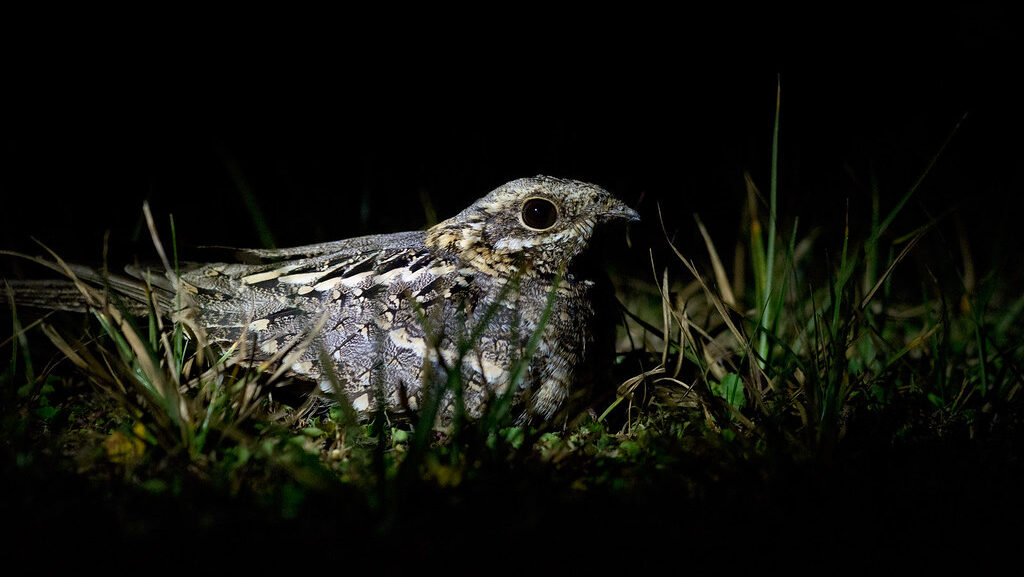
The nighttime chorus of nightjars includes some of the most distinctive and haunting sounds in nature, often becoming the soundtrack of summer nights in many regions. Most species produce repetitive, mechanical-sounding calls that carry remarkably far through the still night air, with the American Whip-poor-will famously repeating its namesake call sometimes hundreds of times without pause. These vocalizations serve primarily territorial and mate-attraction purposes, with males calling persistently from regular perches to establish their breeding territories. Some species, like the Eastern Whip-poor-will, time their most intense calling periods to coincide with moonlit nights when hunting is most productive, creating a connection between lunar cycles and their vocal activity. Interestingly, many nightjar species are named onomatopoeically in various languages for their distinctive calls—from the “churn” of the European Nightjar to the “poor-will” of the Common Poorwill.
Mysterious Migration Patterns
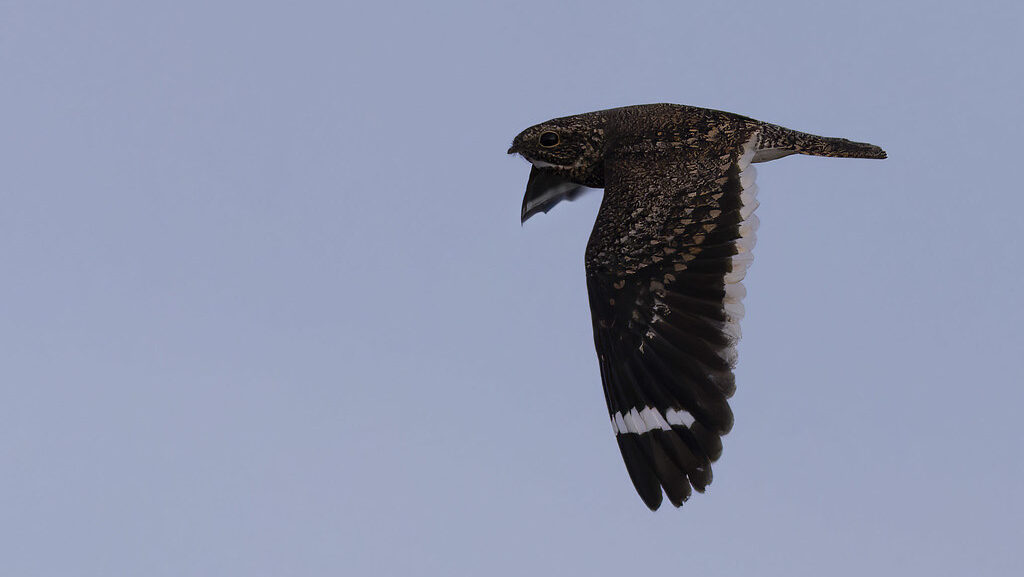
Many nightjar species undertake remarkable long-distance migrations, traveling thousands of miles between breeding and wintering grounds under the cover of darkness. The Common Nighthawk breeds throughout North America but winters as far south as Argentina, making one of the longest migrations of any North American bird. Until recently, their exact migration routes remained mysterious, but modern tracking technology has begun revealing their extraordinary journeys across continents. Research shows that some nightjars can fly non-stop for several days during migration, entering a state of torpor that allows them to conserve energy while maintaining flight. Their migration timing is often precisely synchronized with insect abundance along their routes, demonstrating a remarkable evolutionary adaptation to food availability patterns across vast geographic distances.
The Nightjar’s Unusual Feeding Techniques
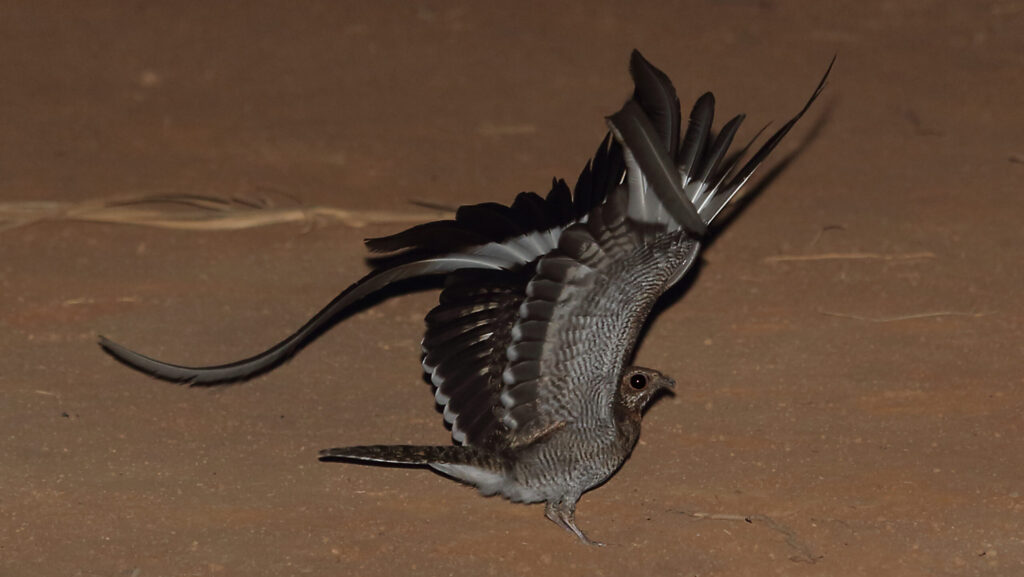
Nightjars employ hunting techniques that differ dramatically from those of other insectivorous birds, relying on their specialized anatomy for aerial capture of nocturnal insects. Most species feed exclusively on the wing, flying with their enormous mouths agape to capture moths, beetles, and flying ants that they detect visually even in near-darkness. The birds’ agility allows them to make quick directional changes to pursue erratic-flying insects, with some species even specializing in capturing particular types of nocturnal insects. Many nightjars strategically hunt near streetlights, livestock paddocks, or over water bodies where flying insects concentrate, adapting their ancient hunting techniques to modern environments. Some species, like the Pauraque of the Americas, occasionally use a “sit-and-wait” strategy, watching from a perch and making short flights to snatch passing insects before returning to the same spot.
Torpor: The Nightjar’s Survival Strategy
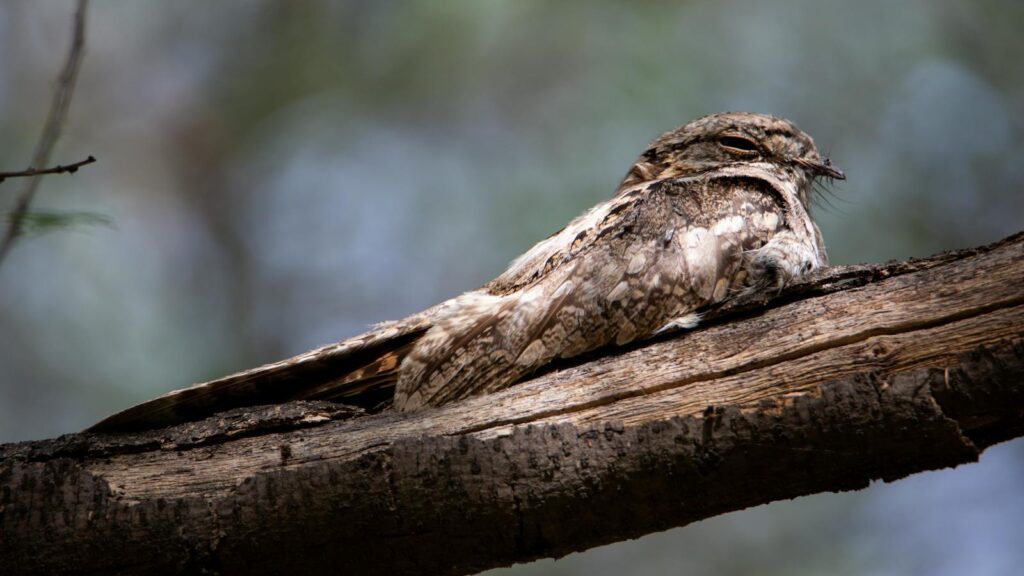
When faced with cold temperatures or food scarcity, many nightjar species can enter a state of torpor—a controlled lowering of body temperature and metabolic rate that allows them to conserve energy during challenging conditions. This remarkable adaptation enables species like the Common Poorwill of North America to survive extended periods without feeding, with this particular species being the only bird known to enter a hibernation-like state that can last for weeks or even months during winter. During torpor, a nightjar’s body temperature may drop by more than 20 degrees Celsius, and its heart and breathing rates slow dramatically, reducing energy requirements by up to 90 percent. This ability has allowed nightjars to inhabit regions with seasonal insect availability that would otherwise be uninhabitable for insectivorous birds, demonstrating their extraordinary evolutionary adaptations for survival.
Cultural Significance and Folklore
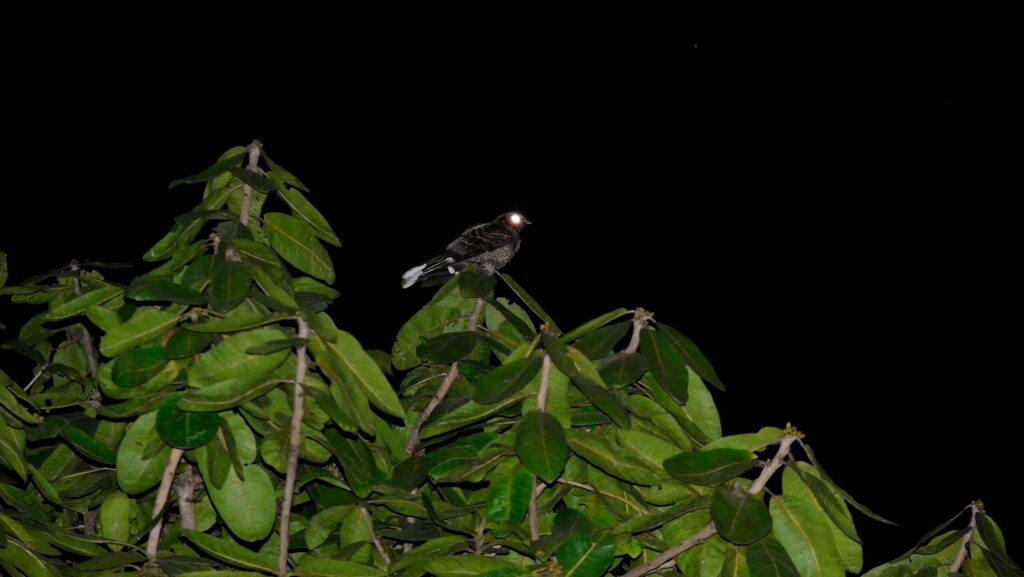
The secretive nature and nocturnal habits of nightjars have made them subjects of superstition and folklore across many cultures throughout history. Perhaps most infamously, their wide gaping mouths led to the European medieval belief that they sucked milk from goats at night, resulting in the scientific name Caprimulgidae (literally “goat-milkers”) and common names like “goatsucker” in several languages. In various Native American traditions, nightjars were considered spiritual messengers or omens, with their calls believed to foretell death or other significant events. British folklore suggested that nightjars embodied the souls of unbaptized children, their haunting calls representing eternal lament. In parts of Africa and Asia, various nightjar species feature in local mythology as harbingers of bad luck or spirits that steal souls, beliefs likely stemming from their ghost-like, silent flight and eerie nocturnal presence.
Conservation Challenges in a Changing World
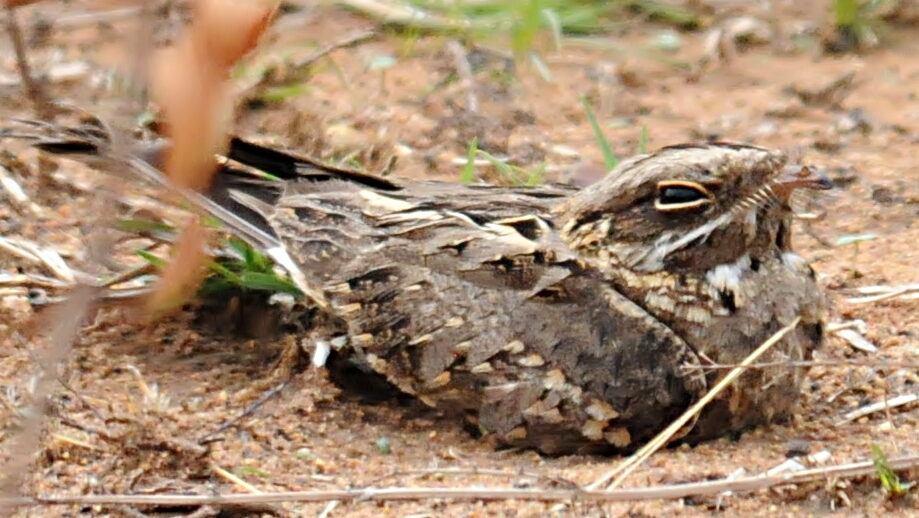
Many nightjar populations face significant conservation challenges globally, with several species experiencing alarming declines over recent decades. Their dependence on specific habitats—often including both open areas for feeding and adjacent woodlands for nesting—makes them particularly vulnerable to habitat fragmentation and land-use changes. Light pollution presents a unique threat to these nocturnal specialists, disrupting their feeding patterns and potentially interfering with their ability to navigate during migration. Pesticide use reduces their insect prey base, while climate change alters the timing of insect emergence that nightjars have evolved to synchronize with their breeding cycles. Road mortality represents another serious threat, as nightjars often rest on warm asphalt roads at night or feed on insects attracted to vehicle headlights, making them vulnerable to collisions with vehicles.
Scientific Discoveries Through Modern Technology

Advances in technology have revolutionized researchers’ ability to study these elusive birds, revealing previously unknown aspects of nightjar biology and behavior. Miniaturized GPS tracking devices weighing less than a gram now allow ornithologists to follow individual birds throughout their annual cycles, mapping precise migration routes and stopover sites that were impossible to determine previously. Night-vision and thermal imaging equipment enable scientists to observe nightjar feeding behavior in complete darkness without disturbance, documenting hunting techniques never before witnessed. DNA analysis has clarified evolutionary relationships within the nightjar family and identified cryptic species—birds that appear identical but are genetically distinct—revealing greater biodiversity than previously recognized. Acoustic monitoring using automated recording devices deployed in remote areas has dramatically improved detection of these vocal but visually cryptic birds, providing crucial data for population monitoring and conservation efforts.
Nightjars as Indicators of Ecosystem Health

The specialized ecological requirements of nightjars make them excellent indicator species for the health of various ecosystems around the world. Their dependence on abundant flying insect populations means healthy nightjar populations generally indicate ecosystems with minimal pesticide contamination and natural insect cycles. Many species require a specific mosaic of habitat types—such as the mix of open areas for feeding and forest edges for nesting used by Whip-poor-wills—making them sensitive indicators of landscape-level ecological integrity. Their nocturnal nature makes nightjars particularly useful for monitoring the impacts of artificial light pollution, an increasingly recognized but understudied form of environmental disruption. Conservation biologists now recognize that preserving natural nightjar habitats often benefits numerous other species that share their ecosystems, making these mysterious birds important flagships for broader conservation efforts.
How to Observe These Elusive Birds

For bird enthusiasts hoping to glimpse these nocturnal specialists, specific techniques can significantly improve the chances of a successful nightjar encounter. The best time for observation is typically during their most active periods at dusk and dawn, particularly during the breeding season when males perform display flights and call more frequently. Listening for their distinctive calls is often the easiest way to locate nightjars, with serious birders learning to distinguish between different species by their vocalizations. Many species can be spotted flying over clearings, forest roads, or fields on moonlit nights as they hunt for insects, appearing as dark, silent silhouettes against the night sky. Some dedicated nightjar observers use red-filtered flashlights to locate the eyeshine of perched or nesting birds without disturbing them, though this technique requires considerable expertise and should be practiced with strict adherence to ethical wildlife viewing guidelines to avoid causing stress to these sensitive birds.
Conclusion
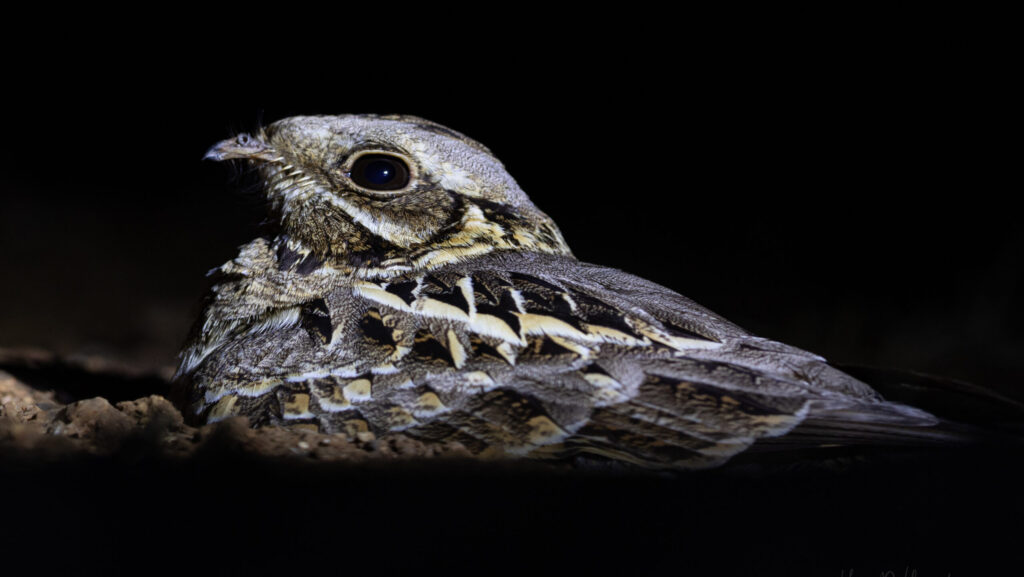
In conclusion, nightjars represent one of nature’s most perfect examples of specialized evolution—birds that have carved out an ecological niche in the darkness that few other vertebrates occupy. Their extraordinary adaptations for nocturnal living, from specialized vision and silent flight to remarkable camouflage and energy conservation strategies, demonstrate nature’s ingenuity in filling every available ecological space. As we continue to learn more about these mysterious birds through advancing technology and dedicated research, we gain not only scientific knowledge but also a deeper appreciation for the diversity of life strategies that surround us, often hidden in plain sight. For those willing to venture out after sunset or before dawn, nightjars offer a glimpse into a parallel world of nocturnal activity that reminds us of the many natural wonders that unfold while most humans sleep.
